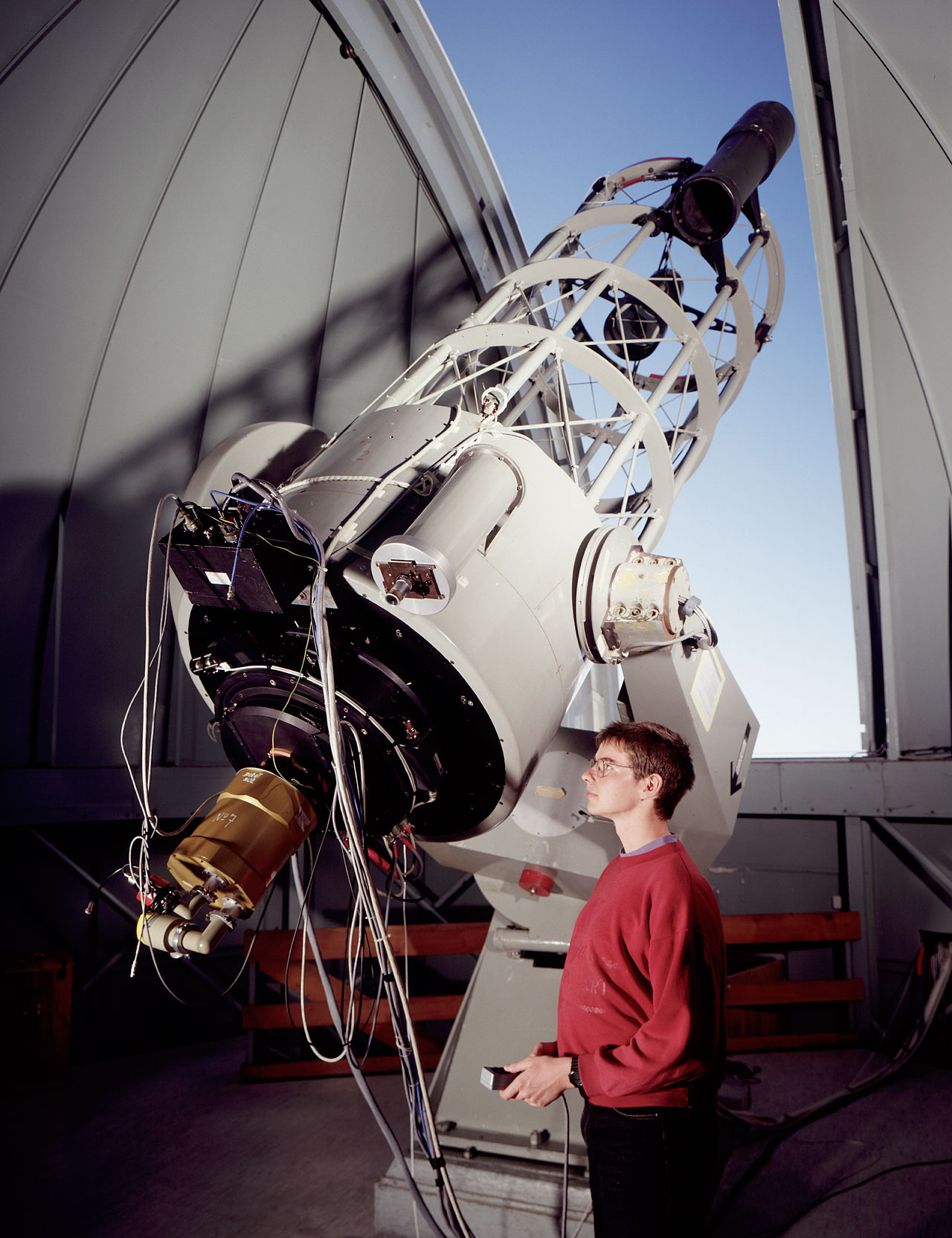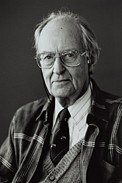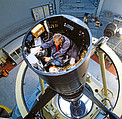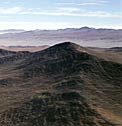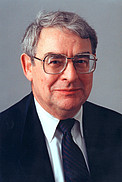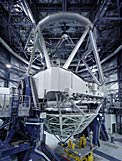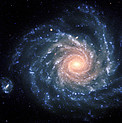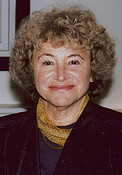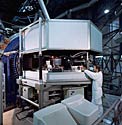Tidslinie
Tidslinien viser højdepunkter og vigtige hændelser i ESOs historie. Et af ESOs oprindelige mål var at få medlemstaterne til at arbejde sammen om at bygge og drive avancerede astronomiske faciliteter, som var mere omfattende end de enkelte lande kunne overkomme. Især skulle samarbejdet gøre det muligt for europæiske astronomer at arbejde med de dele af himlen, som bedst kan ses fra Jordens sydlige halvkugle, såsom Mælkevejens centrum og vore nabogalakser de Magellanske Skyer.
I et uddrag fra fortalen til ESO konventionen fra 1962 står der "Regeringerne i de lande, som indgår denne konvention [...] ønsker i fælleskab at skabe et observatorium udstyret med kraftige instrumenter på den sydlige halvkugle, og i den forbindelse at fremme og organisere samarbejder indenfor astronomisk forskning [...]".
 21 June 1953 — A shared European Observatory is discussed for the first time by a group of astronomers at Leiden, the Netherlands. Immediately thereafter, the subject was further discussed, also in the Netherlands, at the Groningen conference.
21 June 1953 — A shared European Observatory is discussed for the first time by a group of astronomers at Leiden, the Netherlands. Immediately thereafter, the subject was further discussed, also in the Netherlands, at the Groningen conference.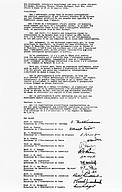 26 January 1954 — ESO declaration by leading astronomers from six European countries expressing the wish that a joint European observatory be established in the southern hemisphere.
26 January 1954 — ESO declaration by leading astronomers from six European countries expressing the wish that a joint European observatory be established in the southern hemisphere. December 1955 — Site testing begins in South Africa and later in South America, to identify the best location for the ESO observatory.
December 1955 — Site testing begins in South Africa and later in South America, to identify the best location for the ESO observatory.
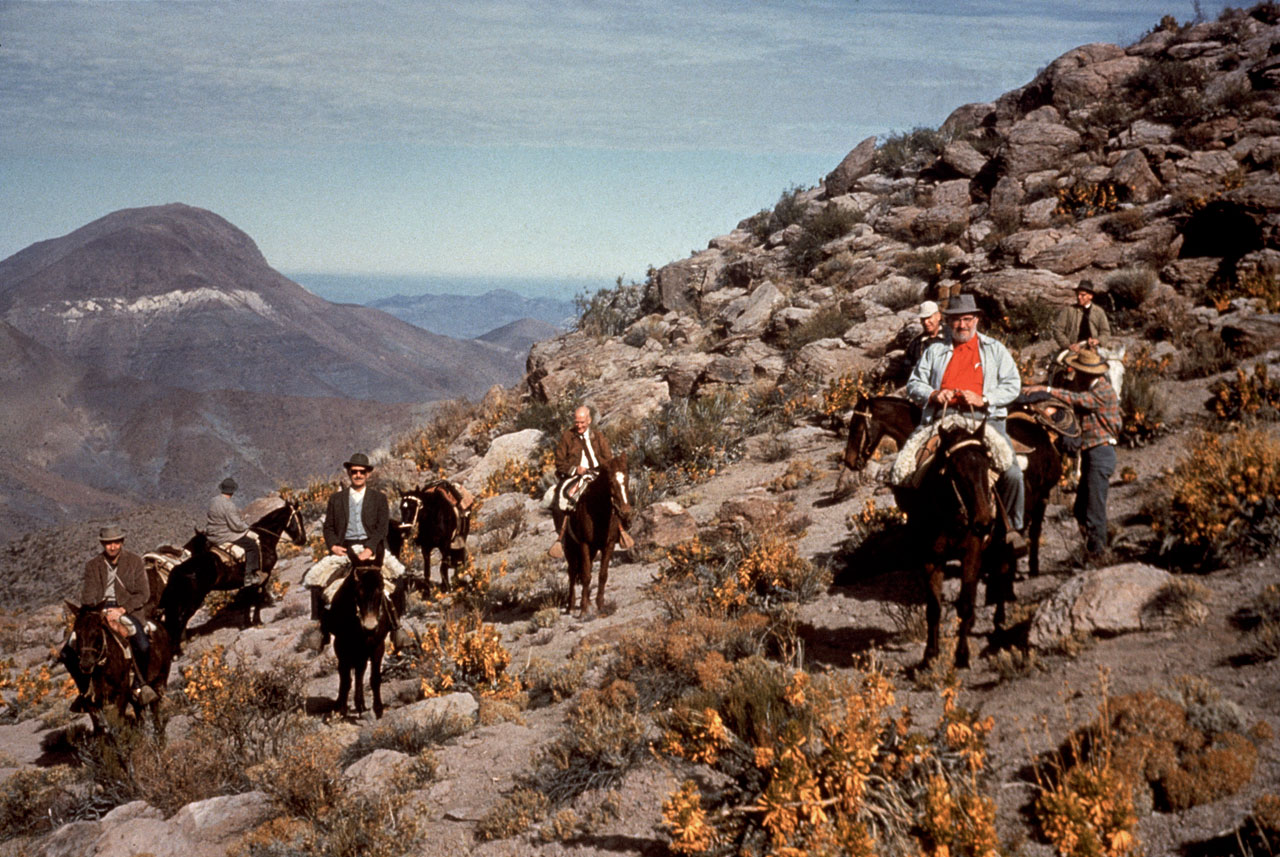
- 5 October 1962 — Founding Members Belgium, France, Germany, the Netherlands and Sweden sign the ESO Convention.
- 1 November 1962 — Otto Heckmann (1901–1983) becomes the first Director General of ESO, and ESO offices open in the Hamburg-Bergedorf Observatory, where he was Director.
- November 1962 — ESO starts site testing in Chile.
 6 November 1963 — Chile is chosen as the site for the ESO observatory and the Convenio (also known as the Acuerdo), the agreement between Chile and ESO, is signed.
6 November 1963 — Chile is chosen as the site for the ESO observatory and the Convenio (also known as the Acuerdo), the agreement between Chile and ESO, is signed.- 15 November 1963 — The decision to build headquarters in Santiago, Chile’s capital is made.
- 17 January 1964 — The ESO Convention takes effect following its ratification in by France, Germany, the Netherlands and Sweden (Founding Members, Member States 1–4).
- 5 February 1964 — The ESO Council ratifies the Convenio.
- 17 April 1964 — The Chilean government ratifies the Convenio.
- 26 May 1964 — The ESO Council selects the mountain Cinchado Nord — later to become La Silla — as the site of its observatory.
 30 October 1964 — Acquisition of La Silla Mountain and land for the Chile headquarters in Vitacura.
30 October 1964 — Acquisition of La Silla Mountain and land for the Chile headquarters in Vitacura.- March 1965 — ESO acquires the Guesthouse in Las Condes.
 March 1965 — Construction of the La Silla Observatory begins.
March 1965 — Construction of the La Silla Observatory begins. 24 March 1966 — Dedication ceremony for the road to the summit of La Silla.
24 March 1966 — Dedication ceremony for the road to the summit of La Silla.- 30 November 1966 — First light for the ESO 1-metre Telescope at La Silla, the first telescope to be used by ESO in Chile.
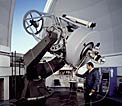 November 1966 — First light of the mid-infrared Kapteyn photometer on the ESO 1-metre Telescope.
November 1966 — First light of the mid-infrared Kapteyn photometer on the ESO 1-metre Telescope. January 1967 — Construction of ESO Headquarters in Santiago’s Vitacura district, Chile begins.
January 1967 — Construction of ESO Headquarters in Santiago’s Vitacura district, Chile begins. May 1967 — First light of the near-infrared photometer on the ESO 1-metre Telescope.
May 1967 — First light of the near-infrared photometer on the ESO 1-metre Telescope.- 24 August 1967 — Denmark formally joins ESO (Member State 6).
- 2 October 1967 — Belgium formally joins ESO (Founding Member, Member State 5).
 July 1968 — First light for the Grand Prisme Objectif Telescope at La Silla, the first telescope ever used by ESO (used in the South Africa tests campaign).
July 1968 — First light for the Grand Prisme Objectif Telescope at La Silla, the first telescope ever used by ESO (used in the South Africa tests campaign). July 1968 — First light for the ESO 1.52-metre Telescope.
July 1968 — First light for the ESO 1.52-metre Telescope. 7 September 1968 — First light for the Bochum 0.6-metre Telescope.
7 September 1968 — First light for the Bochum 0.6-metre Telescope.- December 1968 — ESO helps found the journal Astronomy and Astrophysics.
 February 1969 — First light for the Danish 0.5-metre Telescope.
February 1969 — First light for the Danish 0.5-metre Telescope. 25 March 1969 — Inauguration of the ESO site at La Silla by the President of the Republic of Chile, Eduardo Frei Montalva, and of the ESO Chile headquarters in Santiago’s Vitacura district.
25 March 1969 — Inauguration of the ESO site at La Silla by the President of the Republic of Chile, Eduardo Frei Montalva, and of the ESO Chile headquarters in Santiago’s Vitacura district.
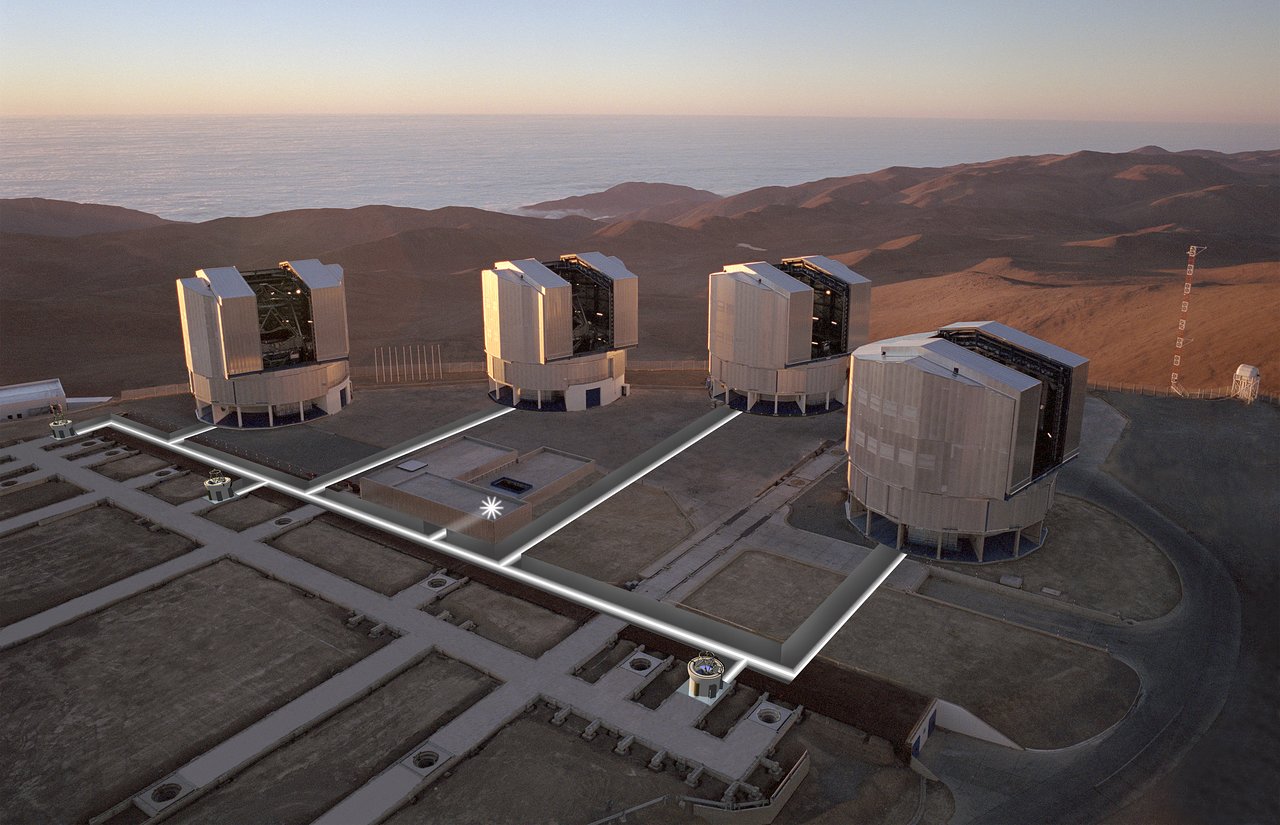
 26 January 2000 — First light for the VLT’s third Unit Telescope (UT3), Melipal.
26 January 2000 — First light for the VLT’s third Unit Telescope (UT3), Melipal.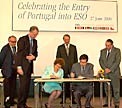 27 June 2000 — Portugal signs the Accession Agreement.
27 June 2000 — Portugal signs the Accession Agreement.  4 September 2000 — First light for the VLT’s fourth Unit Telescope (UT4), Yepun.
4 September 2000 — First light for the VLT’s fourth Unit Telescope (UT4), Yepun. 11 October 2000 — First light of the second Thermal Infrared MultiMode Instrument (TIMMI2) on the ESO 3.6-metre telescope.
11 October 2000 — First light of the second Thermal Infrared MultiMode Instrument (TIMMI2) on the ESO 3.6-metre telescope. 17 March 2001 — First light for the Very Large Telescope Interferometer (VLTI).
17 March 2001 — First light for the Very Large Telescope Interferometer (VLTI). 5 April 2001 — Representatives from ESO, Japan, and North America sign a resolution affirming their mutual intent to construct and operate ALMA.
5 April 2001 — Representatives from ESO, Japan, and North America sign a resolution affirming their mutual intent to construct and operate ALMA.- 7 May 2001 — Portugal formally joins ESO (Member State 9).
 25 November 2001 — First light for the combined NAOS–CONICA instrument (NACO) on the VLT’s UT4 Yepun.
25 November 2001 — First light for the combined NAOS–CONICA instrument (NACO) on the VLT’s UT4 Yepun.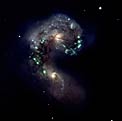 26 February 2002 — First light of the VIsible Multi-Object Spectrograph (VIMOS) on the VLT’s UT3, Melipal.
26 February 2002 — First light of the VIsible Multi-Object Spectrograph (VIMOS) on the VLT’s UT3, Melipal. 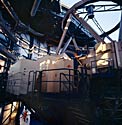 1 April 2002 — First light of the Fibre Large Array Multi Element Spectrograph (FLAMES) on the VLT’s UT2, Kueyen.
1 April 2002 — First light of the Fibre Large Array Multi Element Spectrograph (FLAMES) on the VLT’s UT2, Kueyen.- 21 May 2002 — The United Kingdom signs the Accession Agreement.
- 24 June 2002 — The United Kingdom formally joins ESO (Member State 10). See the ESO Press Release eso0218 or the related Messenger article.
- 24 October 2002 — First light of the Fibre-fed Extended Range Optical Spectrograph (FEROS) on the MPG/ESO 2.2-metre telescope.
 15 December 2002 — First light of the MID-infrared Interferometric instrument (MIDI) on the VLTI.
15 December 2002 — First light of the MID-infrared Interferometric instrument (MIDI) on the VLTI. 11 February 2003 — First light of the High Accuracy Radial Velocity Planet Searcher (HARPS) at ESO’s 3.6-metre telescope at the La Silla Observatory.
11 February 2003 — First light of the High Accuracy Radial Velocity Planet Searcher (HARPS) at ESO’s 3.6-metre telescope at the La Silla Observatory.
 25 February 2003 — ESO and the US National Science Foundation (NSF) sign a bilateral agreement to construct and operate ALMA.
25 February 2003 — ESO and the US National Science Foundation (NSF) sign a bilateral agreement to construct and operate ALMA. 18 April 2003 — First light of the MACAO–VLTI facility.
18 April 2003 — First light of the MACAO–VLTI facility. 24 June 2003 — The 0.6-metre Rapid Eye Mount (REM) telescope starts operations at La Silla.
24 June 2003 — The 0.6-metre Rapid Eye Mount (REM) telescope starts operations at La Silla. - 25 July 2003 — The Republic of Chile granted free concession of the land on Chajnantor for the execution of the ALMA project .
- 6 November 2003 — Ground-breaking ceremony at the 5000-m altitude ALMA site.
 24 January 2004 — First light for the first Auxiliary Telescope (AT1).
24 January 2004 — First light for the first Auxiliary Telescope (AT1). - 9 February 2004 — Finland signs the Accession Agreement.
- 21 March 2004 — First fringes of the Astronomical Multi-BEam combineR (AMBER) on the VLTI.
 6 April 2004 — After more than 1000 nights of observations at La Silla, spread over 15 years, astronomers determine the motions of more than 14 000 solar-like stars residing in the neighbourhood of the Sun, showing that our home galaxy has led a much more turbulent and chaotic life than previously assumed.
6 April 2004 — After more than 1000 nights of observations at La Silla, spread over 15 years, astronomers determine the motions of more than 14 000 solar-like stars residing in the neighbourhood of the Sun, showing that our home galaxy has led a much more turbulent and chaotic life than previously assumed.
- 30 April 2004 — First light for the VLT Imager and Spectrometer in the InfraRed (VISIR) on the VLT’s UT3, Melipal.
 7 July 2004 — Finland formally joins ESO (Member State 11).
7 July 2004 — Finland formally joins ESO (Member State 11).  9 July 2004 — First light for the Spectrograph for INtegral Field Observation in the Near-Infrared (SINFONI) on the VLT’s UT4, Yepun.
9 July 2004 — First light for the Spectrograph for INtegral Field Observation in the Near-Infrared (SINFONI) on the VLT’s UT4, Yepun.
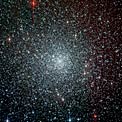 17 August 2004 — Using the VLT, astronomers measure the age of the oldest star known in the Milky Way: 13.2 billion years old. Read more in ESO Press Release eso0425 and in the ESO Press Release eso0106.
17 August 2004 — Using the VLT, astronomers measure the age of the oldest star known in the Milky Way: 13.2 billion years old. Read more in ESO Press Release eso0425 and in the ESO Press Release eso0106.
 10 September 2004 — The VLT obtains the first-ever image of a planet outside the Solar System.
10 September 2004 — The VLT obtains the first-ever image of a planet outside the Solar System.
- 14 September 2004 — Agreement signed between ESO, the US National Science Foundation and the National Institutes of Natural Sciences, Japan, for the joint construction of the enhanced ALMA.
 2 February 2005 — First light for the second Auxiliary Telescope (AT2).
2 February 2005 — First light for the second Auxiliary Telescope (AT2).  14 July 2005 — First light for the submillimetre Atacama Pathfinder Experiment (APEX).
14 July 2005 — First light for the submillimetre Atacama Pathfinder Experiment (APEX). 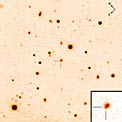 6 October 2005 — ESO telescopes provide definitive proof that long gamma-ray bursts are linked with the ultimate explosions of massive stars, solving a long-standing puzzle. Read more in the ESO Press Release eso0318 , ESO Press Release eso0533 and in ESO Press Release eso0633.
6 October 2005 — ESO telescopes provide definitive proof that long gamma-ray bursts are linked with the ultimate explosions of massive stars, solving a long-standing puzzle. Read more in the ESO Press Release eso0318 , ESO Press Release eso0533 and in ESO Press Release eso0633.
- 1 November 2005 — First light for the third Auxiliary Telescope (AT3).
- 7 December 2005 — ESO signs the European contract for the production of up to 32 ALMA antennas. This is the largest ever contract for industrial work on a ground-based astronomy project.
- 28 January 2006 — First light of the VLT laser guide star, on the VLT’s UT4, Yepun.
- 28 February 2006 — Decision to host the ALMA Santiago Central Office at ESO Vitacura.
 4 June 2006 — First light for the CRyogenic high-resolution InfraRed Echelle Spectrograph (CRIRES) at VLT’s UT1.
4 June 2006 — First light for the CRyogenic high-resolution InfraRed Echelle Spectrograph (CRIRES) at VLT’s UT1. - 15 September 2006 — The robotic TAROT–South Telescope starts work at La Silla.
 11 December 2006 — The ESO Council agrees to proceed with studies for the Extremely Large Telescope (ELT).
11 December 2006 — The ESO Council agrees to proceed with studies for the Extremely Large Telescope (ELT).  15 December 2006 — First light for the fourth Auxiliary Telescope (AT4).
15 December 2006 — First light for the fourth Auxiliary Telescope (AT4). - 22 December 2006 — Czechia signs the Accession Agreement.
 29 December 2006 — Spain signs the Accession Agreement.
29 December 2006 — Spain signs the Accession Agreement. - 14 February 2007 — Spain formally joins ESO (Member State 12).
 25 March 2007 — First light for the Multi-Conjugate Adaptive Optics Demonstrator (MAD) at the visitor focus of Melipal.
25 March 2007 — First light for the Multi-Conjugate Adaptive Optics Demonstrator (MAD) at the visitor focus of Melipal. - 30 April 2007 — Czechia formally joins ESO (Member State 13).
- 6 July 2007 — First light of the Gamma-ray burst Optical/Near-infrared Detector (GROND) on the MPG/ESO 2.2-metre Telescope.
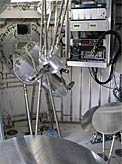 5 August 2007 — First light for the LArge BOlometer CAmera (LABOCA) instrument on APEX.
5 August 2007 — First light for the LArge BOlometer CAmera (LABOCA) instrument on APEX. - 22 August 2007 — First light for the High Acuity, Wide field K-band Imaging (HAWK-I) instrument on the VLT’s UT4, Yepun.
 1 September 2007 — Tim de Zeeuw (1956 –) takes over as Director General of ESO.
1 September 2007 — Tim de Zeeuw (1956 –) takes over as Director General of ESO.  March 2008 — Filming of scenes from the 22nd James Bond movie Quantum of Solace at ESO’s Paranal Observatory.
March 2008 — Filming of scenes from the 22nd James Bond movie Quantum of Solace at ESO’s Paranal Observatory.  13 May 2008 — The VLT detects carbon monoxide molecules in a galaxy located almost 11 billion light-years away for the first time, allowing astronomers to obtain the most precise measurement of the cosmic temperature at such a remote epoch.
13 May 2008 — The VLT detects carbon monoxide molecules in a galaxy located almost 11 billion light-years away for the first time, allowing astronomers to obtain the most precise measurement of the cosmic temperature at such a remote epoch. 30 June 2008 — Austria signs the Accession Agreement.
30 June 2008 — Austria signs the Accession Agreement. - 8 September 2008 — First light for the Phase Referenced Imaging and Microarcsecond Astrometry (PRIMA) instrument on the VLTI.
 6 October 2008 — First light for the Submillimetre APEX Bolometer Camera (SABOCA) instrument on APEX.
6 October 2008 — First light for the Submillimetre APEX Bolometer Camera (SABOCA) instrument on APEX. 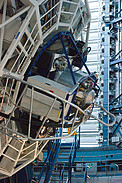 9 November 2008 — First light for X-shooter on the VLT.
9 November 2008 — First light for X-shooter on the VLT.  18 November 2008 — The VLT and APEX team up to study the violent flares from the supermassive black hole at the centre of the Milky Way, revealing material being stretched out as it orbits in the intense gravity close to the central black hole.
18 November 2008 — The VLT and APEX team up to study the violent flares from the supermassive black hole at the centre of the Milky Way, revealing material being stretched out as it orbits in the intense gravity close to the central black hole.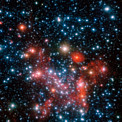 10 December 2008 — Several of ESO's flagship telescopes were used in a 16-year long study to obtain the most detailed view ever of the surroundings of the monster lurking at the heart of our galaxy — a supermassive black hole. Read more in the ESO Press Release eso0226, eso0846, eso1151, eso1332 and eso1512. The Crafoord Prize in Astronomy 2012 was awarded for this result.
10 December 2008 — Several of ESO's flagship telescopes were used in a 16-year long study to obtain the most detailed view ever of the surroundings of the monster lurking at the heart of our galaxy — a supermassive black hole. Read more in the ESO Press Release eso0226, eso0846, eso1151, eso1332 and eso1512. The Crafoord Prize in Astronomy 2012 was awarded for this result.
- 18 December 2008 — The ALMA Observatory is equipped with its first antenna.
- 30 April 2009 — The contract for the ALMA headquarters building in Santiago, the Santiago Central Office, is awarded.
- 1 July 2009 — Austria formally joins ESO (Member State 14).
- 6 July 2009 — Start of construction of the new ALMA headquarters in Santiago’s Vitacura district.
 17 Sep 2009 — First ALMA antenna arrives at 5000-metre-altitude Chajnantor site.
17 Sep 2009 — First ALMA antenna arrives at 5000-metre-altitude Chajnantor site.  25 November 2009 — First three ALMA antennas are successfully linked (phase closure) at 5000-metre-altitude Chajnantor site.
25 November 2009 — First three ALMA antennas are successfully linked (phase closure) at 5000-metre-altitude Chajnantor site.  11 December 2009 — VISTA, the pioneering new survey telescope, starts work.
11 December 2009 — VISTA, the pioneering new survey telescope, starts work.

 26 April 2010 — Cerro Armazones is chosen as site for the ELT.
26 April 2010 — Cerro Armazones is chosen as site for the ELT. 8 June 2010 — First light of the TRAPPIST telescope at La Silla.
8 June 2010 — First light of the TRAPPIST telescope at La Silla. 24 August 2010 — Astronomers using HARPS discover the richest planetary system so far, containing at least five planets around the Sun-like star HD 10180.
24 August 2010 — Astronomers using HARPS discover the richest planetary system so far, containing at least five planets around the Sun-like star HD 10180.  5 November 2010 — ALMA’s Santiago Central Office (SCO), built for the ALMA project by ESO, is handed over.
5 November 2010 — ALMA’s Santiago Central Office (SCO), built for the ALMA project by ESO, is handed over.  1 December 2010 — The first direct measurements of the spectra of exoplanets and their atmospheres are made with the VLT. Read more in the ESO Press Release eso1047 and in the ESO Press Release eso1002.
1 December 2010 — The first direct measurements of the spectra of exoplanets and their atmospheres are made with the VLT. Read more in the ESO Press Release eso1047 and in the ESO Press Release eso1002. 29 December 2010 — Brazil signs the Accession Agreement to become member of ESO.
29 December 2010 — Brazil signs the Accession Agreement to become member of ESO. 31 December 2010 — The Space Telescope-European Coordinating Facility for the Hubble Space Telescope closes.
31 December 2010 — The Space Telescope-European Coordinating Facility for the Hubble Space Telescope closes.
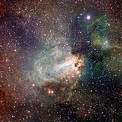



 13 October 2011 — ESO and Chile sign an agreement on the land for the ELT.
13 October 2011 — ESO and Chile sign an agreement on the land for the ELT. 11 June 2012 — ELT Programme approved by ESO Council.
11 June 2012 — ELT Programme approved by ESO Council. 11 June 2012 — Foundation stone laying ceremony for ESO
Headquarters extension building.
11 June 2012 — Foundation stone laying ceremony for ESO
Headquarters extension building. 5 October 2012 — ESO Celebrates 50th Anniversary.
5 October 2012 — ESO Celebrates 50th Anniversary.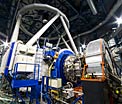 12 December 2012 — KMOS instrument achieves first light on VLT UT1.
12 December 2012 — KMOS instrument achieves first light on VLT UT1. 13 March 2013 — ALMA Observatory inaugurated.
13 March 2013 — ALMA Observatory inaugurated. 6 November 2013 — ESO Celebrates 50 Years of Collaboration with Chile.
6 November 2013 — ESO Celebrates 50 Years of Collaboration with Chile. 5 December 2013 — Extension to ESO Headquarters in Garching, Germany inaugurated.
5 December 2013 — Extension to ESO Headquarters in Garching, Germany inaugurated. 5 March 2014 — MUSE instrument achieves first light on VLT UT4.
5 March 2014 — MUSE instrument achieves first light on VLT UT4.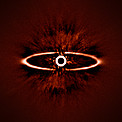 4 June 2014 — SPHERE instrument achieves first light on VLT UT3.
4 June 2014 — SPHERE instrument achieves first light on VLT UT3. 19 June 2014 — Groundbreaking ceremony for the European Extremely Large
Telescope (ELT) takes place at Paranal Observatory.
19 June 2014 — Groundbreaking ceremony for the European Extremely Large
Telescope (ELT) takes place at Paranal Observatory. 28 October 2014 — Poland to Join the European Southern Observatory.
28 October 2014 — Poland to Join the European Southern Observatory.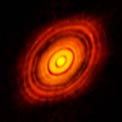 6 November 2014 — Revolutionary ALMA image reveals planetary genesis.
6 November 2014 — Revolutionary ALMA image reveals planetary genesis. 4 December 2014 — Green Light for ELT Construction.
4 December 2014 — Green Light for ELT Construction. 14 January 2015 — Next-Generation Transit Survey (NGTS) facility achieves first light.
14 January 2015 — Next-Generation Transit Survey (NGTS) facility achieves first light.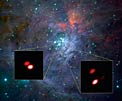 13 January 2016 — GRAVITY achieves first light on VLTI.
13 January 2016 — GRAVITY achieves first light on VLTI. 25 May 2016 — ESO Signs Largest Ever Ground-based Astronomy Contract for ELT Dome and Telescope Structure.
25 May 2016 — ESO Signs Largest Ever Ground-based Astronomy Contract for ELT Dome and Telescope Structure. 24 August 2016 — Pale Red Dot project reveals Earth-mass world in orbit around Proxima Centauri.
24 August 2016 — Pale Red Dot project reveals Earth-mass world in orbit around Proxima Centauri. 22 February 2017 — Temperate Earth-sized Worlds Found in Extraordinarily Rich Planetary System.
22 February 2017 — Temperate Earth-sized Worlds Found in Extraordinarily Rich Planetary System. 25 April 2017 — ALMA Residencia Handed Over.
25 April 2017 — ALMA Residencia Handed Over.
















